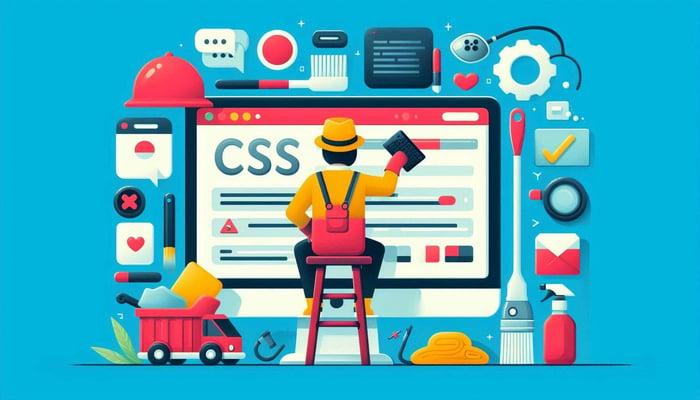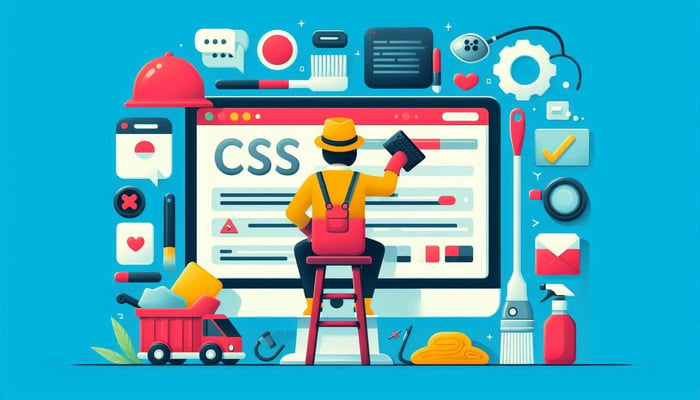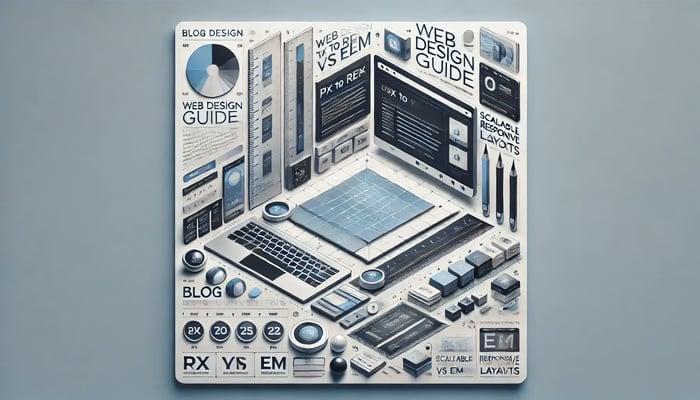

CSS Cleanup Tools: Top Picks for Cleaner, Faster Code
CSS plays a vital role in defining the look and feel of websites, but as projects grow in complexity, CSS files often become bloated with redundant or unused styles. This not only hampers maintainability but also affects website performance. Clean CSS ensures faster load times, better SEO, and an improved user experience. In this blog, we’ll explore the top CSS cleanup tools to help you optimize and declutter your stylesheets efficiently.

Automated CSS Cleanup Tools
For developers managing large projects, automated CSS cleanup tools like provide powerful ways to streamline stylesheets. These tools integrate seamlessly with build workflows, ensuring your CSS is optimized without manual intervention.
1. PurifyCSS
PurifyCSS is a lightweight CSS cleanup tool that helps remove unused CSS from your codebase, reducing file size and improving website performance. It works efficiently by scanning your HTML, JavaScript, and template files to identify and retain only the styles your project actively uses.
Benefits:
- Lightweight and Fast: Produces optimized CSS files with significantly reduced sizes.
- Customizable: Easily adaptable to specific project requirements with customizable configurations.
- Integration with Build Tools: Works seamlessly with tools like Grunt, Gulp, and Webpack, making it suitable for modern development workflows.
Limitations:
- Setup Complexity: Requires configuration and setup, which might be challenging for beginners.
- Dynamic Content Handling: Struggles with dynamically added styles, similar to other tools like UnCSS. You may need to manually specify styles to preserve.
Here's a quick tutorial on how to use it:
Step 1: Set Up Your Environment
Before you begin, ensure you have a text editor (like VS Code) installed.
After that, create a new project folder, and within it, create two files: index.html and style.css.
Step 2: Install PureCSS
You can include PureCSS in your project using a CDN link. Add the following <link> tag to the <head> of your index.html file:
<link rel="stylesheet" href="purecss@3.0.0/build/pure-min.css">https://unpkg.com/purecss@3.0.0/build/pure-min.css">Alternatively, if you are using Node.js, install it via npm:
npm install purecssStep 3: Adding Content to Our HTML and CSS Files
Add the following code to the index.html file:
<!DOCTYPE html>
<html lang="en">
<head>
<meta charset="UTF-8">
<meta name="viewport" content="width=device-width, initial-scale=1.0">
<link rel="stylesheet" href="style.css">
<title>PureCSS Example</title>
</head>
<body>
<h1>Welcome to PureCSS!</h1>
<p>This is a simple PureCSS demonstration.</p>
<button class="pure-button pure-button-primary">Click Me</button>
</body>
</html>Add the following code to the style.css file:
body {
font-family: Verdana, sans-serif;
background-color: lavenderblush;
margin: 20px;
}
h1 {
color: darkslateblue;
text-align: center;
}
p {
color: dimgray;
text-align: center;
font-size: 18px;
}
button {
display: block;
margin: 20px auto;
padding: 10px 20px;
font-size: 16px;
}Step 4: Implementing PurifyCSS Functionality
Create a cssPurifier.js file in the root directory of your project and add the following code:
const purify = require('purify-css');
const content = ['*.html'];
const css = ['*.css'];
const options = {
output: 'cleanedStyles.css',
minify: true,
info: true
};
purify(content, css, options, function (result) {
console.log('Purified and Minified CSS:\n', result);
});This script identifies unused CSS classes and generates a new file, cleanedStyles.css, with the optimized styles.
Step 5: Running PurifyCSS
To execute the PurifyCSS script, open your terminal in the project directory and run:
node cssPurifierAfter running this command, a new file named cleanedStyles.css will be created, containing the purified and minified CSS.
2. UnCSS
UnCSS is a powerful tool designed to clean up your stylesheets by removing unused CSS rules, reducing file size, and improving website performance. It scans your HTML files or live webpages to identify and eliminate unnecessary styles, ensuring your project remains efficient and lightweight.
Benefits:
- Versatility: Works with both local files and live URLs, making it adaptable to various workflows.
- Workflow Integration: Seamlessly integrates with build tools like Gulp, Grunt, and Broccoli for automated CSS cleanup.
- Customization: Allows you to preserve specific styles dynamically added via JavaScript using the
ignoreoption.
Limitations:
- Dynamic Styles: Struggles with JavaScript-injected styles during user interactions, requiring manual intervention to retain them.
- Non-HTML Pages: Requires static HTML representations for templates or scripts like PHP, as it cannot directly process them.
Here's a quick tutorial on how to use UnCSS:
Step 1: Installation
You can easily install UnCSS using npm or yarn:
npm install uncss --save-dev
# or
yarn add uncss --devStep 2: Usage
We can now use UnCSS to clean our CSS files we made in the earlier example. Below is a script that implements this:
const unCss = require('uncss');
const files = ['index.html'];
const options = {
stylesheets: ['style.css']
};
unCss(files, options, (error, output) => {
if (error) {
console.error(error);
return;
}
console.log(output);
});Running this script will display the active CSS rules in your project, giving you a clear view of which styles are in use, and which ones aren't.
3. Stylelint
Stylelint is a versatile CSS linter that ensures consistent coding conventions across your stylesheets while catching potential errors in CSS, SCSS, and similar languages. By maintaining clean and standardized styles, it improves code quality, reduces bugs, and minimizes redundancy.
Benefits:
- Comprehensive Linting: Identifies issues in CSS that could lead to errors or inefficiencies.
- Customizable Rules: Allows you to tailor rules to your project’s requirements, ensuring flexibility.
- Plugin Support: Extend functionality for specific use cases with a wide range of plugins.
- Modern CSS Support: Fully compatible with modern CSS features, as well as preprocessors like SCSS and Less.
- Seamless Integration: Easily integrates with editors, build tools, and version control systems for a streamlined workflow.
Limitations:
- Initial Setup: Requires configuration to match specific project needs, which might take time for new users.
- Learning Curve: Mastering advanced rules and plugins can be complex in larger projects.
Follow these steps to integrate Stylelint into your project:
Step 1: Install Stylelint
Begin by adding Stylelint to your project with npm or yarn:
npm install stylelint --save-dev
# or
yarn add stylelint --devStep 2: Set Up Configuration
Create a .stylelintrc.json file in your project root to define linting rules. Here’s an example configuration:
{
"extends": "stylelint-config-standard",
"rules": {
"block-no-empty": true,
"color-no-invalid-hex": true,
"declaration-colon-space-after": "always",
"indentation": 2,
"max-empty-lines": 2,
"unit-whitelist": ["em", "rem", "%", "s"]
}
}- The
extendsfield applies a set of standard rules. - The
rulessection allows customization to suit your project’s needs.
Step 3: Lint Your CSS
Run Stylelint on your CSS files to analyze and fix issues. For files in the src directory, use:
npx stylelint "src/**/*.css"If your project doesn’t have a src folder, adapt the command:
npx stylelint "**/*.css"Step 4: Iterate and Refine
Review the linting output and adjust the rules in your .stylelintrc.json file as needed to match your project's requirements. You can also fix common issues automatically with the --fix flag:
npx stylelint "src/**/*.css" --fixOnline CSS Cleanup Tools
If you're looking for quick fixes or lightweight solutions, online CSS cleanup tools like CleanCSS, Tabifier, and the W3C CSS Validator offer convenient, browser-based options. They are perfect for formatting, compressing, and validating CSS on the go.
1. CleanCSS
CleanCSS is a lightweight, browser-based tool for formatting, compressing, and cleaning up your CSS code. Perfect for quick fixes and small projects, it efficiently reduces file size by eliminating unnecessary code while maintaining readability and functionality.
Benefits:
- Ease of Use: Operates directly in your browser without the need for installation.
- Customization: Lets you configure compression levels and specify what to remove, such as comments or redundant properties.
- Instant Results: Processes your CSS quickly, making it ideal for fast optimizations.
Limitations:
- Lack of Advanced Features: Does not offer linting, error detection, or integration with build workflows, making it less suitable for larger, more complex projects.
- Manual Workflow: Requires repeated manual input for each optimization, which can become tedious in ongoing development.
While CleanCSS is great for small-scale tasks and quick adjustments, it lacks the depth and automation needed for enterprise-level or heavily dynamic CSS workflows.
2. Tabifier
Tabifier is an intuitive online tool for optimizing and formatting code, supporting CSS, HTML, and C-style languages. By providing consistent indentation and structure, it improves the readability of messy or minified code, making it easier to work with.
Benefits:
- Multi-Language Support: Works with CSS, HTML, and C-style languages, such as those using curly braces and semicolons.
- Ease of Use: Paste your code, click "Tabify," and instantly get a well-formatted output.
- Focus on Readability: Great for reformatting compressed or unorganized code for easier editing and debugging.
Limitations:
- Lacks Advanced Features: Does not include linting, error detection, or code validation.
- Limited Automation: Primarily a manual tool, making it less suited for repetitive or large-scale tasks.
Tabifier is a handy convenience tool for quick formatting, but it’s best complemented with more advanced tools for comprehensive CSS cleanup and validation.
3. CSS Validator by W3C
The W3C CSS Validator is a widely used online tool for validating CSS code against official standards. It helps maintain clean, functional, and standards-compliant stylesheets by detecting errors, deprecated properties, and potential issues in your CSS.
Benefits:
- Standards Compliance: Ensures your CSS adheres to W3C specifications, promoting best practices.
- Error Detection: Identifies invalid properties, typos, and issues that might affect layout functionality.
- Detailed Feedback: Provides comprehensive reports to help optimize your code.
- Flexible Input: Allows validation via file uploads, code pasting, or URLs for live websites.
Limitations:
- Focus on Validation: Primarily checks code quality but does not offer formatting or cleanup functionalities.
- No Automation: Requires manual input, making it less suitable for continuous integration workflows.
The W3C CSS Validator is an essential tool for ensuring your CSS meets web standards, making it a great addition to your toolkit when combined with other cleanup and formatting tools.
Conclusion
In this blog, we explored various CSS cleanup tools to optimize and maintain clean, efficient stylesheets. Tools like UnCSS and Stylelint are excellent for automated cleanup and enforcing coding standards in larger projects, while online options like CleanCSS, Tabifier, and the W3C CSS Validator cater to quick fixes, formatting, and validation needs. By leveraging these tools, you can reduce redundancy, improve readability, and ensure your CSS adheres to best practices.
If you want to get better at CSS, reading the official documentation will definitely help!
Related articles

Development using CodeParrot AI




